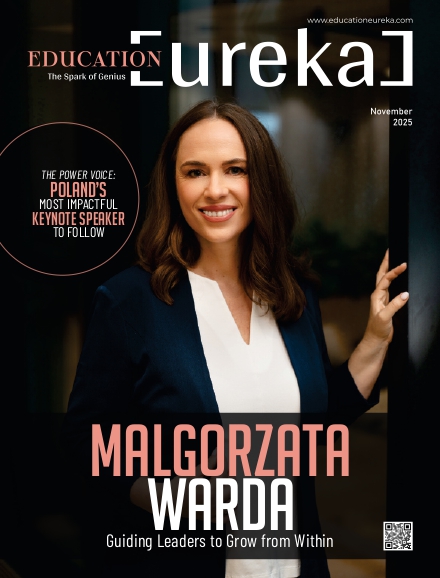
Waiting in line is a universal experience, yet few stop to consider the systems behind it. For Professor Richard Larson, that seemingly mundane problem became the foundation of a remarkable career. At MIT, he devoted decades to understanding how systems function, and how they can be designed to serve people better.
Larson began his academic journey at the Massachusetts Institute of Technology, earning all three of his degrees, Bachelor of Science in 1965, Master of Science in 1967, and Doctorate in 1969, in electrical engineering. That same year, he joined the MIT faculty. Early in his career, he earned the nickname “Dr. Queue” for his groundbreaking work in queueing theory. His research explored how people perceive time spent waiting and how subtle changes in service systems could significantly improve the customer experience. His insights influenced service delivery across sectors, from healthcare and finance to transportation and recreation.
In the mid-1990s, Larson expanded his focus beyond operations research. As Director of MIT’s Center for Advanced Educational Services from 1995 to 2003, he helped pioneer digital learning at a time when online education was still in its infancy. He led the Learning International Networks Consortium (LINC), which connected educators worldwide to share resources and research. Later, he served as Principal Investigator of MIT BLOSSOMS, a global initiative providing free, interactive STEM video lessons to under-resourced schools.
Over a career that spanned more than 5 decades, Larson authored six books and over 175 peer-reviewed papers. His contributions earned him numerous awards, including the prestigious Lanchester Prize in 1972 and a lifetime achievement medal in 2017. He served as president of both the Operations Research Society of America and INFORMS, playing a key role in advancing both academic research and practical applications in the field.
At the heart of his work was a simple principle: systems should serve people. Whether he was solving complex equations or mentoring students, Richard approached each challenge with clarity, empathy, and a commitment to meaningful impact.
Richard Charles Larson was born in 1943 in Bayside, Queens, New York. His childhood involved frequent relocations, from Sunbury in Pennsylvania to North Plainfield in New Jersey and then to Needham, Massachusetts. This constant movement developed in him a strong sense of adaptability and curiosity. Growing up in a household led by educators, he showed an early inclination toward mathematics and science. His academic journey was marked by leadership roles, tutoring, and scholastic honors.
Larson earned his degrees from the Massachusetts Institute of Technology: a Bachelor of Science in 1965, a Master of Science in 1967, and a PhD in 1969 in electrical engineering. His doctoral thesis, titled Models for the Allocation of Urban Police Patrol Forces, was an early indicator of his drive to connect mathematical theory with practical, civic applications. The focus on optimizing emergency response systems was both timely and impactful.
He began his professional research at the RAND Corporation, where he worked on real-time deployment models for police and emergency services in New York City. His efforts transitioned public safety planning from guesswork to data-driven solutions, marking the start of his reputation as “Doctor Queue.” This nickname reflected his commitment to improving systems plagued by inefficiencies, particularly through queuing theory.
In 1972, he published Urban Police Patrol Analysis, which earned him the Frederick W. Lanchester Prize. Over time, his work expanded to cover hypercube queuing and resource allocation, reinforcing his influence in operations research. By 1993, he was elected to the National Academy of Engineering. His leadership within professional bodies such as ORSA and INFORMS, coupled with numerous accolades including the Kimball Medal, illustrates a career shaped by intellectual rigor and civic purpose.
Richard’s work in operations research reflects a deep commitment to transforming theoretical constructs into practical applications. His early work with the RAND Corporation focused on resource allocation for emergency services in New York City. By integrating queuing theory and optimization models, he addressed a significant challenge in urban governance: the need for timely, effective emergency responses.
Prior to Larson’s models, decision-making in this field relied heavily on institutional memory or anecdotal strategies. His contributions offered a structured, data-informed alternative. Dispatch algorithms and dynamic resource allocation methods that he introduced have since been adopted in various metropolitan areas.
His research extended to emergency medical services, public transportation, and disaster preparedness. In collaboration with Amedeo Odoni, he co-authored Urban Operations Research in 1981, a comprehensive resource that demonstrated how modeling networks and queues could improve public systems. The book has become a foundational reference in both academic and applied settings.
Larson’s insight into the psychological dimension of queuing stands out. He noted that people’s perception of waiting often influences their experience more than the actual duration. This understanding encouraged service sectors to improve customer experience through better communication and environmental design rather than simply increasing staff.
He also played key leadership roles within the operations research community. As president of ORSA and later INFORMS, he helped direct the field’s growth and outreach. His recognition as an INFORMS Fellow and recipient of the President’s Award in 2003 underscore his efforts to connect academic research with real-world impact.
Larson’s approach consistently bridged theory and practice. Through analytical tools and system modeling, he enabled public institutions to shift from reactive strategies to proactive, efficient service delivery. His influence has contributed to cities becoming more responsive, structured, and accountable in their public services.
Richard’s contributions to education have been both innovative and transformative. In 1995, he became the director of MIT’s Center for Advanced Educational Services (CAES). Though best known for his work in operations research, he entered the field of educational technology with a clear purpose: to make high-quality learning accessible regardless of location.
Under his direction, CAES evolved into a space for educational experimentation and global partnerships. One of the most prominent initiatives was the creation of the Learning International Networks Consortium (LINC) in 2002. LINC brought together institutions, policymakers, and educators from over 25 countries, reflecting Larson’s belief that digital platforms could bridge systemic gaps in global education.
Among his notable projects is MIT BLOSSOMS, or Blended Learning Open Source Science or Math Studies. After visiting rural schools in China, Larson and his wife, Mary Elizabeth Murray, were inspired to design free video modules tailored to local learning environments. These videos, created by a diverse group of instructors, are accompanied by interactive classroom activities, offering a blend of online and in-person education that fosters greater student engagement.
Larson also introduced real-time distance learning long before the concept became mainstream. He advocated for synchronous, interactive classrooms that could connect MIT faculty with international students in real-time. His work in this area anticipated many elements of current online education, including tutor support tools and blended learning strategies.
He did not merely digitize the existing curriculum. Instead, he reimagined the learning process itself, emphasizing interaction, local context, and active participation. His contributions have shaped how educational institutions approach distance learning and continue to influence educators seeking to create inclusive, engaging classroom experiences in both physical and virtual environments.
Richard has long balanced academic excellence with a deep commitment to mentorship and institutional leadership. As a professor at MIT, he has guided students who later made their own mark in academia and policy, including Kent W. Colton and Maia Majumder. His teaching style has been described as clear, engaging, and thought-provoking. He encouraged students not only to solve technical problems but also to connect their knowledge to real-world systems.
His influence extended beyond the classroom. As president of the Operations Research Society of America and later INFORMS, Larson played a central role in defining the priorities of these professional communities. He chaired award committees, contributed to editorial boards, and promoted collaboration between academics and practitioners.
Larson also contributed to public sector reform through advisory roles. He offered guidance to government agencies and corporations, including the U.S. Postal Service and the City of New York. His ability to translate academic models into actionable policy earned him recognition as a bridge between theory and practice.
Colleagues consistently mention his approachable nature and willingness to mentor. Despite a busy professional life, he remained committed to his students, peers, and public institutions. His long partnership with Mary Elizabeth Murray, whom he married in 1979, reflects his personal commitment to family and community.
His impact is most visible in the networks he helped establish, scholars, educators, and civic leaders shaped by his guidance and leadership. These connections now span the globe and continue to evolve. The legacy he leaves behind includes not only scholarly achievements, but also a thriving community of individuals who carry forward his principles of service, integrity, and lifelong learning.
Richard’s career illustrates how academic expertise can be translated into public value. He combined rigorous research with a practical mindset, resulting in tangible improvements in public services, educational access, and professional practice. His work has influenced urban planning, emergency response, and online learning on a global scale.
With a publication record that includes six books and over 175 peer-reviewed articles, Larson’s scholarship spans diverse domains. His studies on disaster preparedness, smart-energy systems, workforce planning, and educational innovation continue to be cited widely. The consistency with which his research is applied highlights the practical relevance of his work.
His initiatives in education, particularly LINC and BLOSSOMS, have created new pathways for global learning. These programs have demonstrated how digital tools can enhance classroom instruction, especially in underserved communities. Larson emphasized the importance of free access and interactive learning, which helped make these programs sustainable and widely adopted.
He has received some of the most prestigious honors in his field. These include the Frederick W. Lanchester Prize, the Kimball Medal, and the INFORMS President’s Award. As a founding INFORMS Fellow and former president of major professional societies, his leadership has influenced not only research but also the direction of the broader field.
Larson’s legacy is not confined to a single discipline. He has encouraged cross-disciplinary thinking, social responsibility, and a global perspective. In an academic environment often driven by specialization, his career stands as a reminder of the value of breadth, context, and service.
The systems he helped improve, from emergency response networks to global classrooms, reflect his belief that thoughtful design and informed action can create lasting change. His contributions will continue to guide both scholars and practitioners in shaping a more efficient, equitable, and connected world.
Discover more insightful articles on education trends, exclusive interviews, in-depth magazines, and the latest educational news—explore now on the Education Eureka website.






Welcome to the future of digital storytelling, where creativity meets innovation. We’re not just a magazine platform; we’re a team of passionate visionaries committed to transforming how stories are shared, celebrated, and experienced in the digital age. Join us as we inspire, inform, and redefine the world of digital magazines.
© Copyright 2025 | educationeureka | All Rights Reserved.


